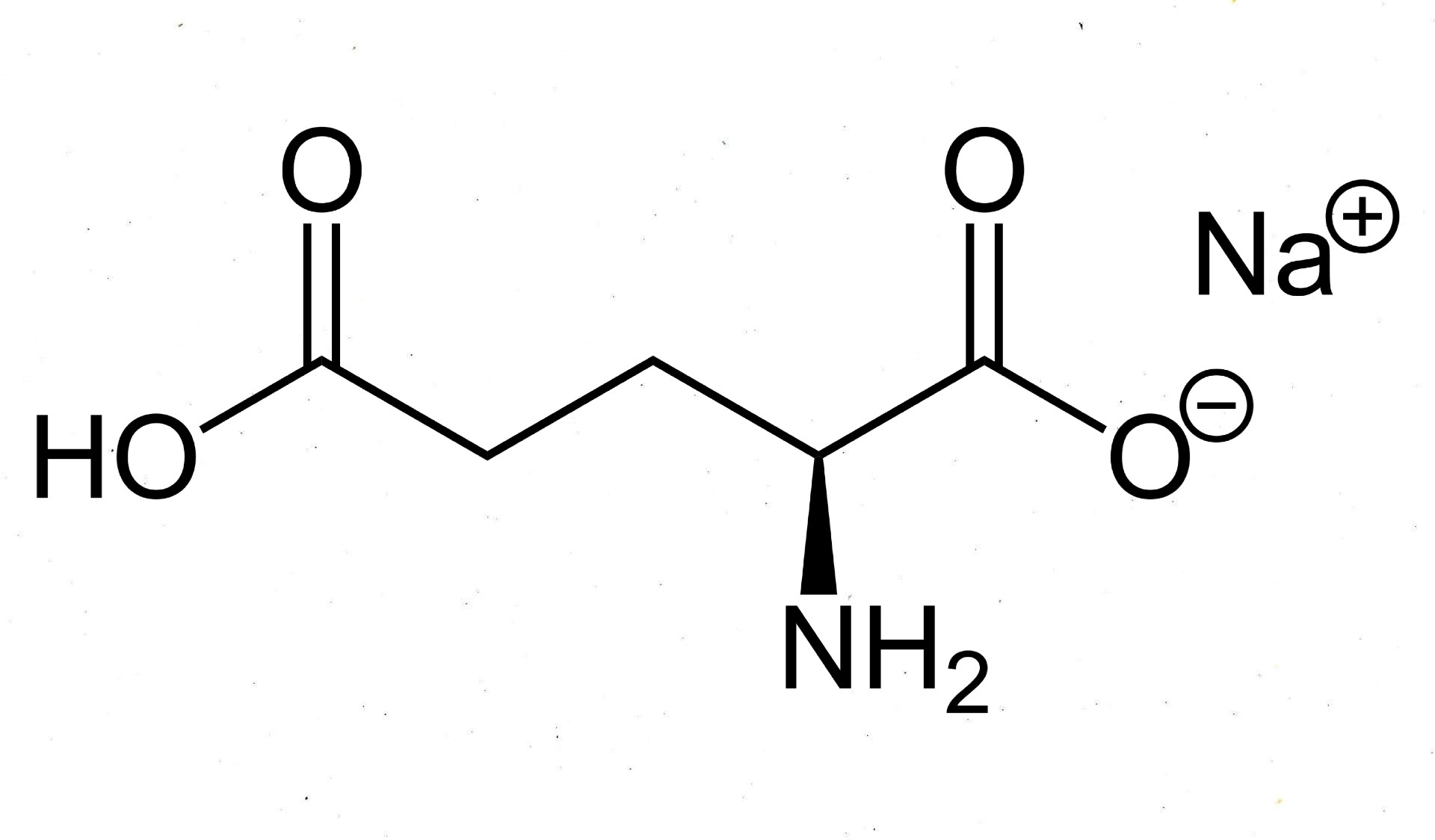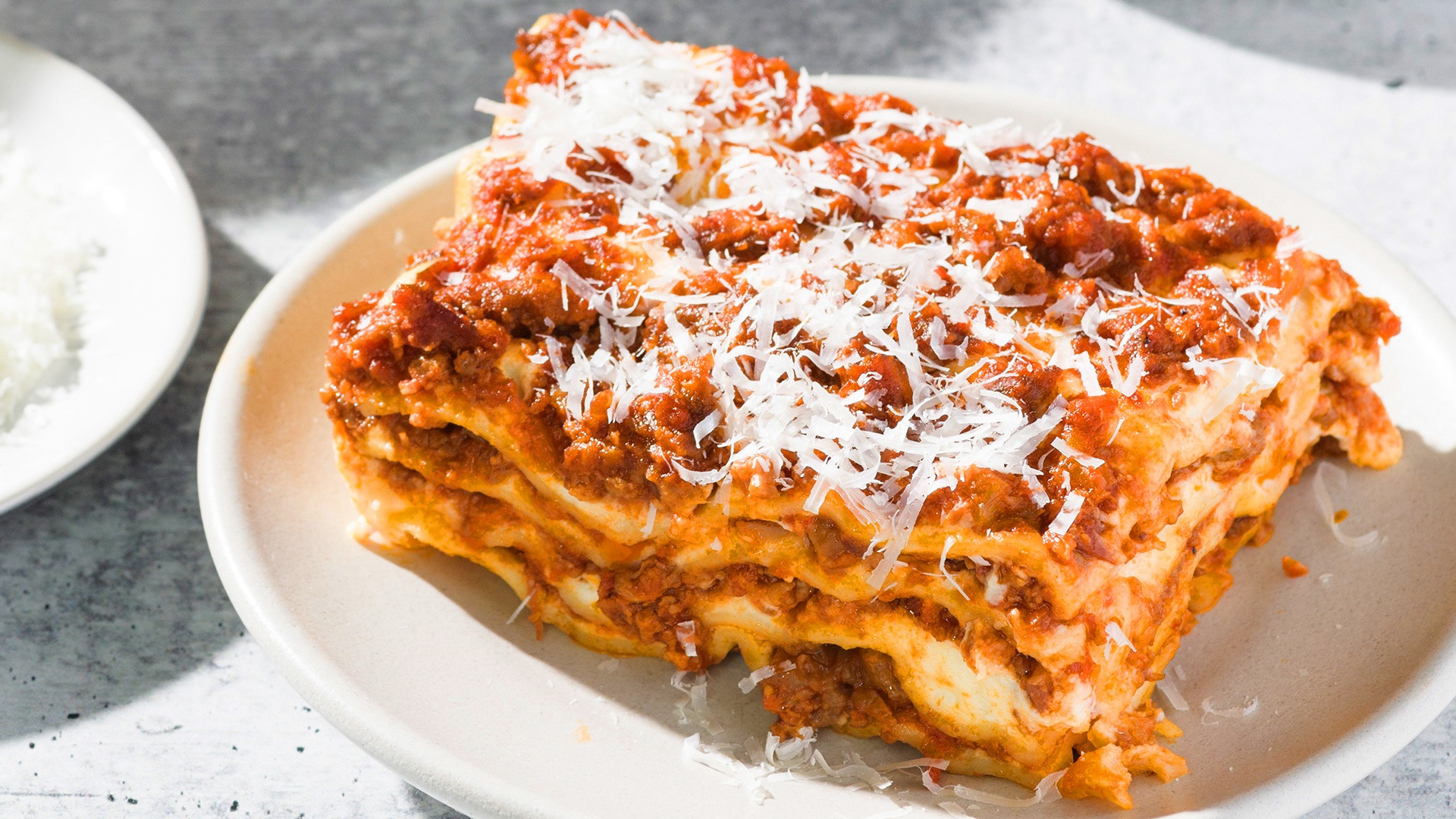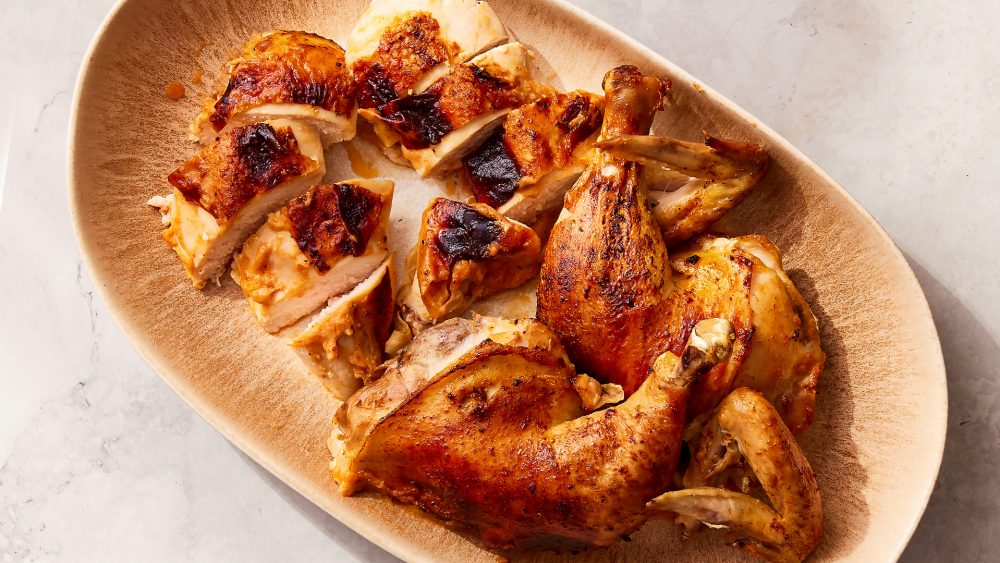It took a few years for the Western world to catch up. According to Harold McGee’s “On Food and Cooking: The Science and Lore of the Kitchen,” it wasn’t until 2001 that “biologist Charles Zuker at the University of California, San Diego and colleagues demonstrated conclusively that humans and other animals do have a specific taste receptor for MSG.”
Amino acids, glutamates and MSG—the Molecular Building Blocks of Umami
Three letters—MSG—have become something of a lightning rod for discussions around food additives. It isn’t the only source of umami, but seeing as it was the first scientifically isolated source, it’s a good place to start. Breaking it down to the molecular level can help quell some of the chemophobia around the effective food additive.
Much like sodium chloride (table salt), MSG is a salt comprised of a positively charged ion (in this case sodium) and a negatively charged ion, in this case glutamate—the ionized form of glutamic acid, or glutamic acid that has lost a hydrogen atom. The sodium ion takes the place of the hydrogen, giving us MSG, which looks like this:

We’re all pretty familiar with sodium, and consume it every day, so that would leave the glutamate to blame for all the trouble. Glutamates, however, are nothing more than amino acids, another family of molecules that are ubiquitous in all sorts of foods. Pure, crystalline monosodium glutamate is synthesized in a commercial setting, but glutamic acid occurs naturally in a wide range of ingredients including—but in no way limited to—tomatoes, mushrooms, cheese, shellfish, anchovies, miso, some seaweeds, soy sauce and meat. (While Parmesan cheese is a rich source of glutamates, take care not to mistake the little crystals that form on the surface for MSG—those crunchy “cheese diamonds” are tyrosine, a different, mostly flavorless amino acid produced by proteins as they break down in aging cheeses.)
Amino acids are nothing to fear; in fact, you should think of them like building blocks. They join together in long, twisty chains to make up proteins. They’re made up of 10 to 40 atoms, mostly carbon, hydrogen and oxygen, with at least one amine group consisting of a nitrogen and two hydrogen atoms. (It’s the amine group that gives amino acids their name. ) Short chains of amino acids are called peptides, and peptides and amino acids are responsible for sweet, savory and bitter flavors in food, depending on their structures.
So Why All the Hate?
Distrust of MSG as an ingredient can be traced back to a single letter—not even a study—that appeared in the New England Journal of Medicine in 1968. In the letter, a Chinese researcher living in the United States said he felt a numbness in his neck and arms after eating at some Chinese restaurants, but not after eating meals he had prepared at home, and suggested it could be due to the cooking wine used, or large amounts of sodium present, due to the inclusion of soy sauce and MSG. This led to a widespread fear of MSG, with the unfortunately named “Chinese restaurant syndrome” being blamed for every instance of discomfort one might experience after eating a heavy, salty meal.
In the half century since the letter’s publication, no one has been able to reliably reproduce the symptoms of “Chinese restaurant syndrome” with MSG in a laboratory setting. And again, Chinese food isn’t the only cuisine that favors glutamate-heavy ingredients. As science and health writer Beth Skwarecki points out in her article on the subject, “That there was no ‘Italian restaurant syndrome’ suggests that maybe (white, American) people were eager to blame Asian restaurants long after the syndrome’s existence was disproved.“
Another factor that may contribute to a dislike of MSG is the idea that it flattens or oversimplifies—it’s a shortcut, a way for fast food slingers and snack food makers to add a cheap hit of one-note savory flavor without taking the time to develop it. As English food writer Fuchsia Dunlop lamented in her book on Sichuan cooking “Land of Plenty,” “It is a bitter irony that in China of all places, where chefs have spent centuries developing the most sophisticated culinary techniques, this mass-produced white powder should have been given the name wei jing, ‘the essence of flavor.’”
But MSG is good for more than ranch dressing and cheesy tortilla chips, and using it thoughtfully does not make one a lazy or unenlightened cook. A pure source of glutamate is a helpful tool in our culinary toolbox, and one that’s even more powerful when combined with other umami-enhancing ingredients.
Umami Synergy—When Glutamates Are Not Enough

Another famous source of umami is soy sauce, which contains both sodium and glutamic acid, giving it the same savory backbone as MSG, but with a more complex, fermented flavor profile. Glutamates on their own are rarely all that pleasant. Try a few crystals of pure MSG; they taste like meat, if the flavor of meat was synthesized in a lab by artificial intelligence. It’s when glutamates combine with other molecules that the magic happens.
One family of molecules that plays well with glutamates is nucleotides, organic molecules composed of a five-carbon sugar molecule, a nitrogen-containing biological compound, and one phosphate group (a phosphorous atom bonded to four oxygen molecules, three of which have a negative charge). You don’t need to remember any of that to reap the tasty benefits, but it does make for clever cocktail party conversation.
Two nucleotides in particular—inosine monophosphate (IMP) and guanosine monophosphate (GMP)—do incredible things when coupled up with glutamates. Originally isolated by one of Ikeda’s colleagues just a few years after his discovery of MSG, neither contribute umami on their own, but they directly affect the way glutamates bind to the tastes receptors in your mouth, allowing them to bind more effectively, amplifying the umami flavor fifteen-fold.
Umami Synergy in Action
A good example of umami synergy in action is sushi. The nucleotides in fish combine with the glutamates in soy sauce to provide a deep, round savoriness that drives us to dip our salmon roll in the fermented soy bean sauce over and over until we’re out of fish. The nucleotides in anchovies and glutamates in Parmesan cheese make similar magic in Caesar dressing, as do the nucleotides in miso and the glutamates in Parm in our vegetarian version of Caeser dressing. The same thing happens when you combine the nucleotides in meat with the glutamates in tomatoes to make bolognese.
It’s also why that bag of Doritos is so hard to put down—pure monosodium glutamate, along with glutamate-heavy ingredients like Romano cheese, whey protein concentrate and buttermilk are supercharged by the addition of small amounts of IMP and GMP, blasting your taste receptors with more umami than they would ever encounter in the wild (or even at a restaurant).
The combination of glutamates and nucleotides is also why products like soy sauce, Better than Bouillon and yeast extracts like Vegemite and Marmite have such a deep—almost overwhelming—complete and concentrated umami-heavy flavor. The nucleotides set your tastebuds up to receive a heavy dose of umami, and the glutamates knock it out of the park.
Browning and Caramelization—You Can’t See Umami
“Browning equals flavor” is a common culinary adage, but even though a well-seared steak tastes better than a piece of grey, steamed meat, browning is not responsible for umami, at least not directly. Non-enzymatic browning, such as that brought about by the Maillard reaction is a quick, cascading chemical reaction between amino acids and reducing sugars. It happens rapidly at high temperatures in the range of 280 to 330 °F, but non-enzymatic browning can occur at lower temperatures; it just takes much longer. (A good example of slow non-enzymatic browning is the darkening that occurs as cheese ages.) Whether fast or slow, the process creates hundreds of distinct flavors, including the toastiness in the crust on a loaf of bread, the deep, resonant flavors in a cup of coffee, or the lovely charred notes on a grilled steak.
One thing this reaction does not do, however, is create umami-heavy flavor compounds like glutamates or nucleotides. In fact, the Maillard browning reaction destroys and transforms amino acids (including glutamates) into new compounds, which can contribute to a decrease in overall umami—another win for the medium-rare steak crowd. But browning creates inviting colors and intoxicating aromas, which signal to our brains that we’re about to eat something satisfying and delicious, priming our palates for a savory experience. Roasted, charred and toasty flavors can also heighten savory richness by way of contrast—like they do in these Spanish steak sandwiches with mushrooms—and keep your palate from getting oversaturated with a single flavor note.
Caramelization is another chemical process that gets lumped into discussions over umami—especially when discussing onions—but doesn’t produce the glutamates or nucleotides responsible for the deep, savory flavor. Unlike Maillard browning, caramelization doesn’t involve amino acids at all, but is brought about by the thermal degradation of sugar, which gives it a nutty, sweet flavor with more warmth and character than plain white table sugar. This warm richness can increase our perception of umami. If you’ve ever made a batch of our Tomato-Rice Soup with Caramelized Onion, you’ve experienced the umami-heightening power of caramelized sugars.
How to Effectively Heighten Umami
Adding umami to a dish is a holistic process. Pure glutamates like MSG can increase the amount of umami perceived in a dish, but they do their best work when combined with a few other flavorful friends.
A sprinkle of MSG on a slice of apple makes for an interesting combination of super savory and crisp, tangy sweetness, but it tastes lacking and incomplete. But a slice of aged gouda—which is high in glutamates and nucleotides, as well as all sorts of contrasting compounds brought about by the Maillard browning that occurs when cheese is aged—does incredible things to that same apple slice, offering a more complete and fully realized flavor experience.
Much like that delicious bowl of dashi that sent Dr. Ikeda on his flavor quest, the best umami-heavy dishes use a combination of ingredients to create a round, rich and savory taste sensation. Don’t limit yourself. Whether you’re getting your glutamates from tomatoes, mushrooms, fermented soy products, cheese or plain crystals of MSG, give those amino acids some nucleotides to play off of. If it works for Doritos, it will work for you.
Join the conversation on Facebook, Instagram, TikTok and Pinterest.
And if you're looking for more Milk Street, check out our livestream cooking classes with our favorite chefs, home cooks and friends for global recipes, cooking methods and more.




